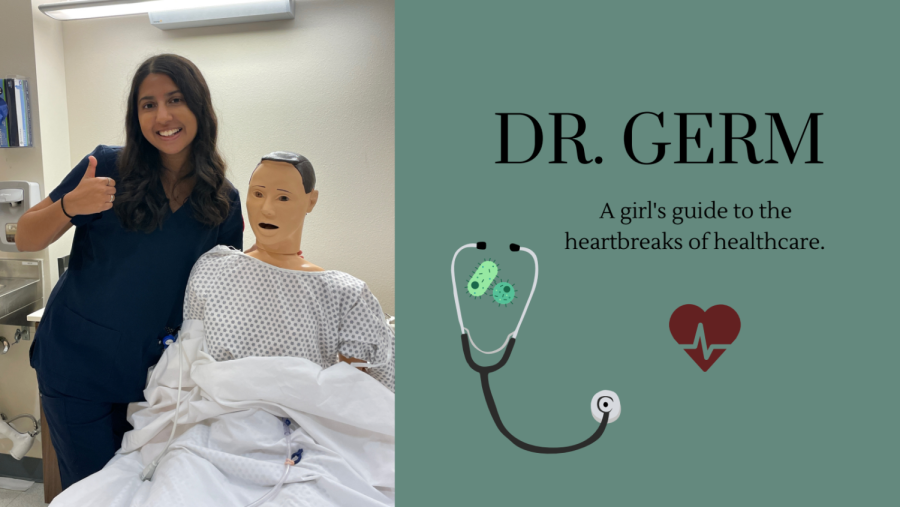In this weekly blog, staff reporter Shannon Christian writes about the myths of healthcare and how it impacts students.
Dr. Germ: change in environment
The inner workings of hospitals have always fascinated me. Over summers in middle school I would binge watch TV dramas set in hospitals such as Grey’s Anatomy or Scrubs. As years passed though, hospitals became less of an elusive labyrinth for me, but rather a building in which I recognized handled very complex aspects of human life.
For many, hospitals can be a source of anxiety; a lot of visits being centered around illness or injury, which could uproot one’s entire life. For myself however, I always viewed hospitals as a place I wanted to be, because I saw it as a place of future employment rather than a place I would be due to an unfortunate incident.
After visiting family members in the hospital, as well as even being a patient myself, my view expanded to recognizing that hospitals can be buildings of immense tragedy, that could cause many people to loathe going there or even working within it. By recognizing how others may feel about going to the hospital, I am able to understand how to alter bedside manner and patient care into making it a less anxious experience, and even maybe a comforting experience at that.
This week was my first experience in the hospital as a certified nurse aide, and while I’ve had clinical experience in an assisted living facility, I understood that patient care would look different since it would be more emergent. Additionally, there would be patients who would feel more worried due to their predisposition of the hospital mentioned earlier, or due to the nature of their condition being severe. Thus, I was prepared to mainly observe, and offer a comforting presence in what could be a nerve-wracking experience.
My first day was on the “MedSurg” floor, which is where all medical-surgical patients are given rooms either after, or in-between procedures. While this was far from the emergent nature of the trauma department, there were still many factors that contributed to patients’ anxiety such as the amount of medications they were on, and the fact that many had a central line in which intravenously delivers medicine through their whole body.
I could sense many of the patients’ anxieties, and found that a major part of my role there was to offer comfort. Whether that was distracting the patient and engaging in conversation unrelated to medicine, ensuring their sheets were clean, or bringing more water, these little acts served as ways for the patient to feel more hopeful about leaving.
The idea of leaving was a major distinction from the nursing home, as residents there were comfortable and settled in the fact that they would call that facility their home for the rest of their lives. In the hospital, most patients were anxious to leave, and go back to their homes when they recovered. This allowed for more hopeful conversations to be had in patient rooms, and whenever patients were discharged, their faces would display a beaming smile, happy to be on the road to recovery. While I found joy in finally entering the hospital, many patients were on the complete opposite of the spectrum, only being happy to exit it.
